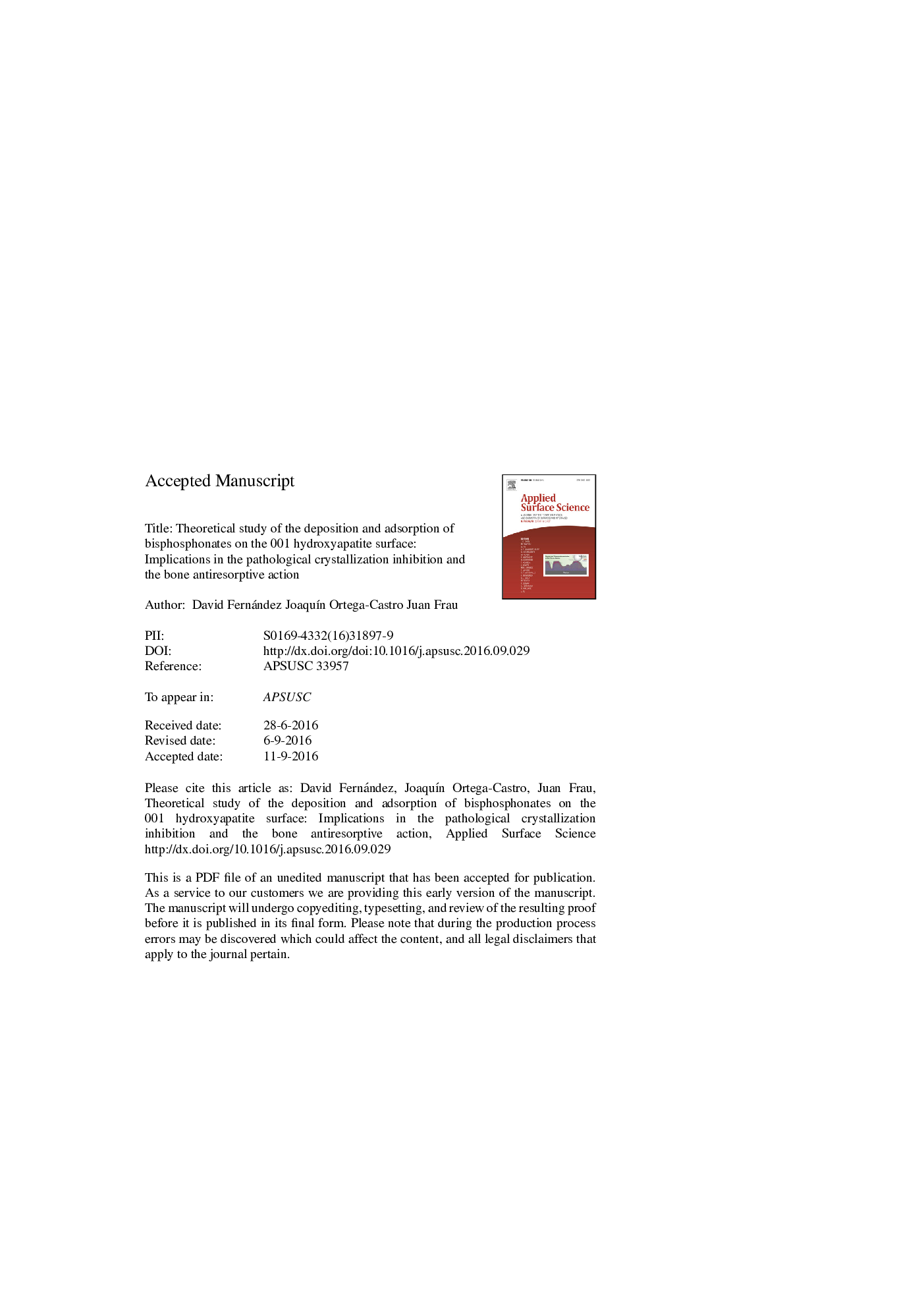| Article ID | Journal | Published Year | Pages | File Type |
|---|---|---|---|---|
| 5354632 | Applied Surface Science | 2017 | 35 Pages |
Abstract
The effect of different side chain groups of bisphosphonates (BPs) on the adsorption on the hydroxyapatite (HAP) is still a controversial issue. In this work, we studied the deposition and adsorption of a set of 26 BPs on the HAP (001) surface by using density functional theory (DFT) in which has been shown that the charge, the length or the presence of different functional groups at R2 side chain can modulate the adsorption energy of the BP. It was observed that negative charged groups at R2 enhanced the favourable electrostatic interactions between the BP and the HAP surface, but also that the length of R2 was important to enable the formation of the favorable electrostatic interactions between the functional group at R2 and the surface. A crossover study between the HAP/BP model (3D-QSAR/DFT) and the inhibition of the human farnesyl pyrophosphate synthase (FPPS) (3D-QSAR) pointed out that the electrostatic character of the R2 side chain provokes contrary effects in the inhibition of pathological crystallization and in the bone antiresorptive action of BPs.
Related Topics
Physical Sciences and Engineering
Chemistry
Physical and Theoretical Chemistry
Authors
David Fernández, JoaquÃn Ortega-Castro, Juan Frau,
